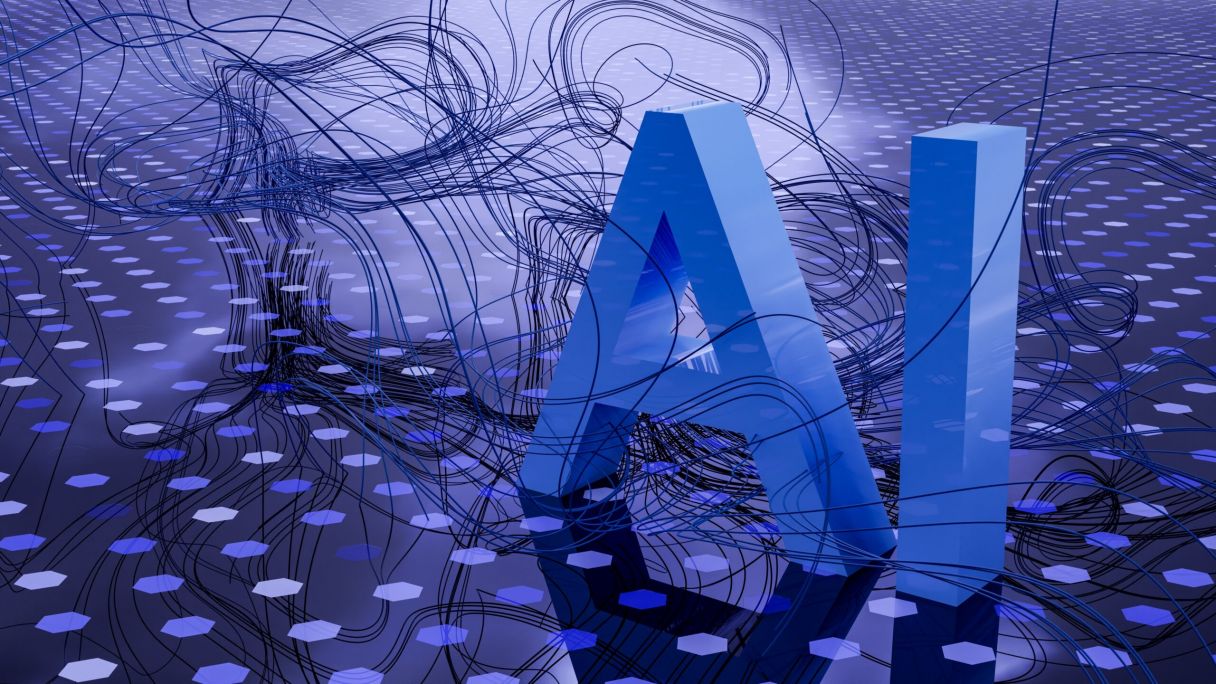The Pros and Cons of AI in the Workplace
We weigh up the positive and negative impacts of AI on the world of work.

AI has rapidly become one of the hottest topics in the world, with chatbots like ChatGPT becoming commonly used tools, and debate surrounding the impact and ethics of this technology dominating the media. According to Forbes, AI is set to contribute up to $15.7 trillion to the global economy by 2030. However, a recent survey of US workers conducted by the Society for Human Resource Management revealed that 35% of those interviewed believe their jobs will be replaced by AI in the next five years. Right now, AI is seen as “the most innovative and promising arena for workplace and workforce management,” with AI-augmented applications comprising 40% of HR functions used globally.
It’s no secret that the rise of AI is casting doubt on what is to come for many employees, with almost 10% of those interviewed saying that their role has already been impacted by workplace automation. But while there are fears around what AI may mean for the future of work, there are also plenty of positive outcomes to consider. We’ve taken a look at some of the most likely pros and cons of AI usage in the workplace.
Pros:
Efficiency: AI works quickly and consistently to complete the task at hand, and can run 24/7 without any fluctuation in the quality of the work performed. When performing a task, it won’t make mistakes and its output won’t vary. One of the main pulling factors for employers is the speed at which AI works, allowing employees to focus their energy on more fulfilling, creative work. AI can easily take on jobs such as initial customer support, and AI-operated chatbots are frequently utilised by companies that need to provide fast and accurate customer support. AI tools using behavioural science to assist customer service representatives in providing improved support are also available and in use in many countries.
Cost Effectiveness: AI does not need to be paid and, therefore, however costly it is to run and maintain the technology, it is still vastly less expensive than paying a human workforce. A recent survey by McKinsey revealed that AI can reduce operational costs by up to 30%. According to management consulting company Gartner, by 2026, conversational AI usage in contact centres may save up to $80 billion in labour costs.
Provides Support: It is argued that AI in the workplace is meant only to relieve workers of tedious, repetitive tasks, and is not intended to replace human creative output. Google’s Jack Krawczyk insists that Google’s recently launched chatbot Bard is intended not to replace the human creative, but to support them – saying, “people are using this product in a way that’s boosting their creativity. It’s helping them accelerate their ideas and is helping them really fuel their curiosity.” SHRM reports that Searchlight CEO and co-founder Kerry Wang said recently, “AI can make us smarter and more efficient — research shows that AI taking over more technical tasks frees people up to do more strategic things.”
Cons:
Lacks Creativity: While AI may be able to imitate work produced by humans in a fraction of the time, timing is perhaps its only advantage, as it can never create anything truly new; it cannot innovate or boundary-break. Though we may require more time, human minds are adept at imagining and inventing any number of other worlds, concepts, and ideas. Meanwhile, AI, as it will tell you itself, is not. One journalist asked ChatGPT if Generative AI “lacks imagination”, to which it responded: “Yes … While AI can generate novel outputs based on patterns it has learned from data, it cannot imagine something entirely new without a pre-existing example to work from.”
Lacks Accuracy: With high profile instances of employers such as CNET quietly substituting work produced by their own staff with AI-authored content, the fate of creative workers appears to hang in the balance. That is, until you look a little closer. CNET found errors in over half of its AI-generated news articles and said it would pause the use of AI-produced content. Chatbots often make factual errors and even ‘hallucinate’, a term employed to refer to AI’s propensity for simply making things up. While AI can perform straightforward tasks with speed and efficiency, it cannot be relied upon to deliver 100% factually accurate original content when left to its own devices.
Ethical Issues: No society is free from discrimination or bias, and so it is unsurprising that occurrences of prejudice in AI systems have been widely reported – with Kerry Wang stating, “AI is only as good as the rules that program it, and machine learning is only as good as the data it relies on.” For example, using AI to filter job applicants can result in more of one demographic of person being selected for interview more than any other, due to bias programmed into the AI.
As observed in Forbes, since the dawn of technology there have been accompanying predictions of the mass replacement of workers by robots and, yet, advancements in technology have never resulted in mass job loss among the educated workforces. For now, AI looks set mainly to support in the workplace, however the list of pros and cons is ever-growing.
To enquire about Mauve’s services and business expansion advice, contact our team of experts here.
Follow Mauve Group on Twitter, LinkedIn, and Facebook.

Register a company or use an Employer of Record?
Compare company registration and Employer of Record (EOR) models to understand costs, compliance, speed to market, and which option best supports your global expansion.


Global payroll and compliance management: how to avoid costly mistakes
Discover how running compliant payroll protects your business while managing employees in multiple countries overseas.
